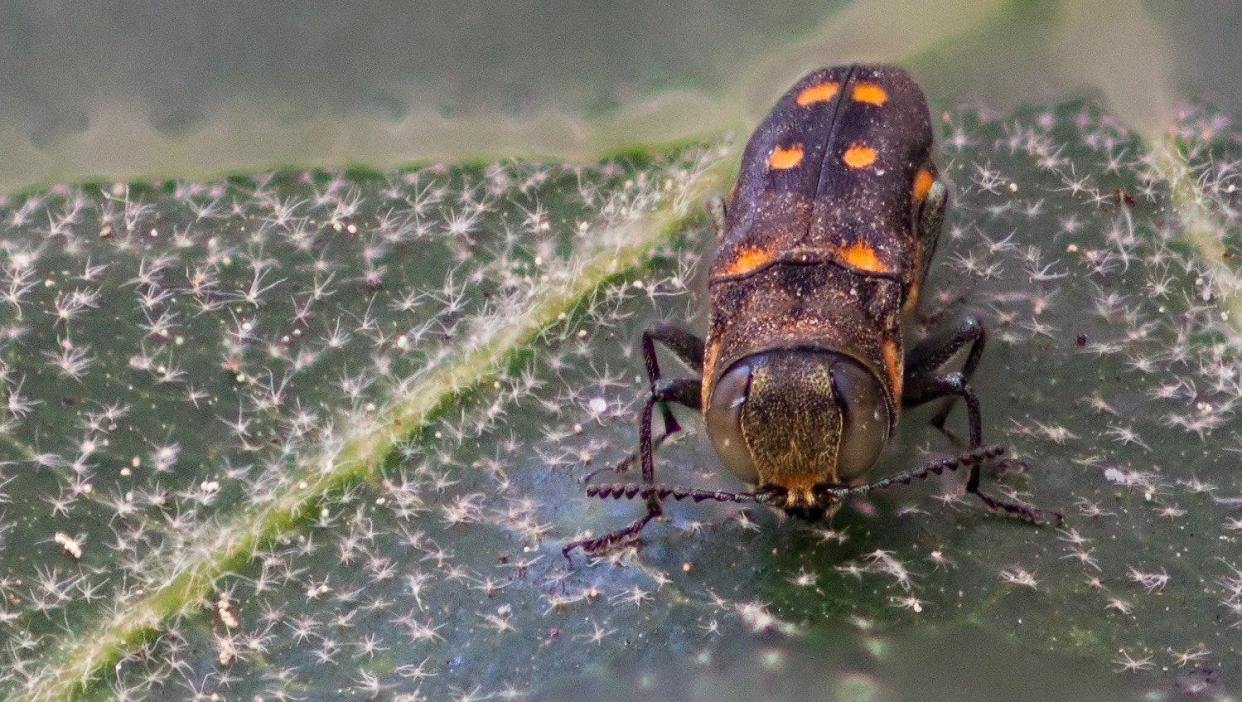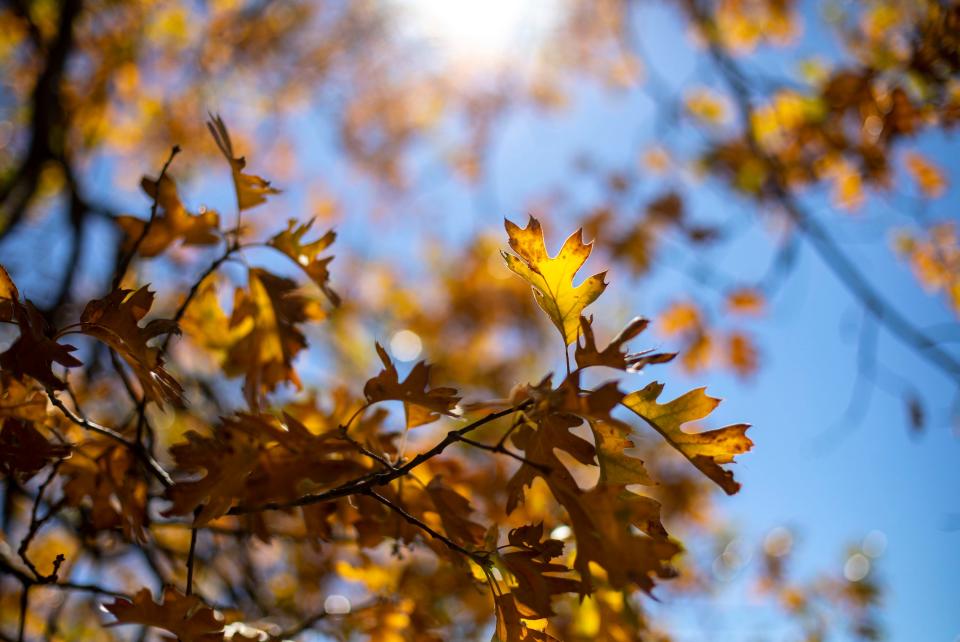Officials drafting plan for oak-killing beetle in San Bernardino National Forest

A beetle responsible for the deaths of tens of thousands of oak trees is in the crosshairs of a federal agency that is hoping to keep it from spreading in the local mountains.
The U.S. Forest Service is developing a proposal for treating trees infested with the goldspotted oak borer in the San Bernardino National Forest.
The proposal includes surveying which trees have the minuscule insect living within them and possibly cutting them down or spraying with insecticide.
"We are very excited to begin developing this long-term strategy to mitigate against the infestations threatening our oak trees,” said Forest Supervisor Danelle Harrison. “The tools that we are proposing to use will help us detect and treat infestations as soon as reasonably possible and slow the spread of these borers.”
Named for the six orangish spots on its wings, the goldspotted oak borer, or GSOB, is tiny — roughly a dozen could sit on the head of a penny.
But its destructiveness has been massive.
Since 2002, the beetle has contributed to the death of more than 80,000 oak trees over roughly 1.2 million acres, according to the University of California, Riverside’s Center for Invasive Species Research.
The oak borer larvae kill by feeding under the bark and damaging a tree’s nutritional system.
A transplanted menace
In its native habit, the oak forests of southeastern Arizona, the insect is not a pest.
In California, however, the insect has decimated local oak populations after first being found in San Diego County in 2004.
One study found the pest responsible for killing at least 25,000 trees in both San Diego and Riverside counties as of 2013.
The oak borer was first found in the San Bernardino National Forest in 2012. Authorities made a second discovery of the tiny killers in 2019 in Sugarloaf, an unincorporated community near Big Bear City.
A scientist at the time called the find a “big deal.”
“GSOB is a very destructive oak pest and as it kills oaks, people cut them down, sell them for firewood, and the pest is moved into new areas,” said Mark Hoddle, the director of UCR’s Center of Invasive Species Research.
Hoddle said the beetle was particularly ruinous to the Cleveland National Forest northeast of San Diego, where dead trees increased the risk of fire, limbs dropping and resulted in the closure of hiking trails and campsites.
After a century away: Tribal members reconnect with ancestral Cahuilla trail in California
The local forest's plan

San Bernardino National Forest officials said the plan to stop the insect’s spread would involve a tree survey of up to 2,800 acres of federal land.
If a tree is found to be moderately or heavily infested, those within 100 feet of roads or recreation and administrative sites may be cut down and ground up.
Grinding is important as a beetle can live in a fallen tree for up to two years, which is why scientists caution moving infested firewood.
Other prevention methods may include covering infested wood with a tarp or metal screening to prevent the borers from escaping.
The spraying of insecticide is another option which forest officials said have been shown to reduce the ability of an adult beetle from emerging from a tree “when applied during spring and early summer months.”
The public can send comments about the draft proposal to the Forest Service to ian.Turner@usda.gov by Aug. 31.
Daily Press reporter Martin Estacio may be reached at 760-955-5358 or MEstacio@VVDailyPress.com. Follow him on Twitter @DP_mestacio.
This article originally appeared on Victorville Daily Press: Plan to fight oak-killing beetle in San Bernardino National Forest

